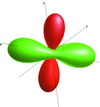issue contents
July 2022 issue

Cover illustration: The structure of a potassium sodium calcium silicate, [(K1.52Na0.48)Ca3Si3O10, di(potassium, sodium) tricalcium trisilicate], obtained by crystallization of a glass composed of K2O:Na2O:CaO:SiO2 in the molar ratio 1.5:0.5:6:6 and previously annealed at 1273 K is presented. This material is of importance because most mass-produced glasses today (both flat and hollow) are based on melts of the four oxides mentioned above. They are also of archaeological importance because they have been found in Chinese glassware dating back to 475–220 BC. See: Kahlenberg [Acta Cryst. (2022). E78, 727–731].
research communications
Download citation


Download citation


The crystals of methyl 3,5-dimethylbenzoate are composed of strands of C—H⋯O=C bonded molecules, which are further arranged into layers. As a result of the presence of two bromomethyl substituents in 3,5-bis(bromomethyl)phenyl acetate, molecular dimers formed by crystallographically non-equivalent molecules are connected to structurally different two-dimensional aggregates in which the bromine atoms participate in Br⋯Br bonds of type I and type II. In the case of 5-hydroxybenzene-1,3-dicarbaldehyde,which possesses three donor/acceptor substituents, the molecular association in the crystal creates a close three-dimensional network comprising Caryl—H⋯Ohydroxy, Cformyl—H⋯Oformyl and O—H⋯Oformyl bonds.
Download citation


Download citation


The methoxy group lies very close to the plane of the phenyl ring while the acetamido group is twisted out of this plane. In the crystal, N—H⋯O and C—H⋯O hydrogen bonds form layers of molecules parallel to the ab plane. The layers are connected by C—H⋯Cl hydrogen bonds and C—H⋯π(ring) interactions, forming a three-dimensional structure.
CCDC reference: 2175514
Download citation


Download citation


The whole molecule of the title compound is generated by twofold rotational symmetry. In the crystal, molecules are linked by intermolecular C—H⋯O interactions with ![[R_{2}^{2}]](/e/issues/2022/07/00/tx2050/teximages/tx2050fi1.svg) (12) ring motifs, and C—H⋯π interactions, resulting in ribbons along the c-axis direction. The molecular packing is consolidated by van der Waals interactions between these ribbons.
(12) ring motifs, and C—H⋯π interactions, resulting in ribbons along the c-axis direction. The molecular packing is consolidated by van der Waals interactions between these ribbons.
CCDC reference: 2173928
Download citation


Download citation


In the crystal, neighboring molecules are linked into layers parallel to the (200) plane via C—H⋯O hydrogen bonds and C—H⋯π interactions. van der Waals interactions between parallel molecular layers help to strengthen the packing.
CCDC reference: 2176709
Download citation


Download citation


The synthesis and crystal structure of rac-2-[7-methyl-4-(4-methylphenyl)-4-(phenylimino)-6,6-bis(propan-2-yl)-3-oxa-4λ6-thia-5-aza-6-silaoct-4-en-1-yl]-2,3-dihydro-1H-isoindole-1,3-dione are reported.
CCDC reference: 2163661
Download citation


Download citation


The title compounds arose as unexpected by-products of an iodination reaction: in each case the fused-ring and isoxazole planes are almost perpendicular to each other.
Download citation


Download citation


Four novel piperazinium salts are reported, and based on 1-phenylpiperazinium as a common cation in the asymmetric units that include additionally water molecules, and different P-substituent benzoate anions or a trifluoroacetate anion. They are hydrated and there are three crystallized as 1:1 salts while the fourth is a 2:2 salt. Their crystal packing depends on strong ribbons or sheets stabilized by hydrogen bonds of type N—H⋯O and O—H⋯O and other interactions as C—H⋯O, C—H⋯π and C—H⋯F in the trifluoroacetate-based one.
Download citation


Download citation


The structures of the three related compounds dichloridobis(quinoline N-oxide-κO)zinc(II); dibromidobis(quinoline N-oxide-κO)zinc(II) and diiodidobis(quinoline N-oxide-κO)zinc(II) are presented.
Download citation


Download citation


The packing of the title disubstituted ferrocene derivative is stabilized by weak C—H⋯X (X = I, Cl), C—H⋯π(Cp) and C—Cl⋯π(phenyl) interactions, building a three-dimensional network. The cation has planar chirality with Sp(Fc) absolute configuration. The structure of the title compound is compared with related disubstituted (trimethylammonio)methyl ferrocenes.
CCDC reference: 2177602
Download citation


Download citation


A new phase in the quaternary system K2O–Na2O–CaO–SiO2 with idealized composition (K1.5Na0.5)Ca3Si3O10 has been structurally characterized. The results indicate the existence of a solid-solution series K2–xNaxCa3Si3O10.
CCDC reference: 2178743
Download citation


Download citation


C—H⋯Br interactions connect molecules in the crystal, resulting in zigzag C(8) chains along the [100] direction. C—Br⋯π interactions connect these chains into parallel layers to (002). van der Waals interactions between the layers aid in the cohesion of the crystal packing.
CCDC reference: 2178832
Download citation


Download citation


The isostructural title compounds arose as unexpected single-crystal products from the reactions of Na2CO3, MO2 (M = Zr, Hf) and As2O5 in a NaCl/CsCl eutectic flux.
Download citation


Download citation


The title compound resulted from the condensation reaction between 1,3-bis{[(4-methoxyphenyl)methyl]amino}propan-2-ol and 2-hydroxybenzaldehyde in CH3OH. The structure exhibits disorder of one of the 4-methoxybenzyl groups, the hydroxy group bonded to the 1,3-diazinan ring, and the methyl group of the methoxy residue. The crystal packing is sustained by C—H⋯O and O—H⋯π interactions, giving rise to infinite chains running along the b-axis direction.
CCDC reference: 2092230
Download citation


Download citation


The crystal structure of β-KCoFe(PO4)2 is isotypic with that of KZnFe(PO4)2.
CCDC reference: 2181684
Download citation


Download citation


The centrosymmetric trans-NiN4O2 coordination polyhedra of the Ni2+ ions in the complex cations and anions of the title compound are tetragonally distorted octahedra. In the crystal, O—H⋯O hydrogen bonds between the phosphonate groups of the anions result in the formation of layers oriented parallel to the bc plane, which are further arranged into a three-dimensional network due to hydrogen-bonding involving the macrocyclic di-aqua cations and water molecules.
CCDC reference: 2178456
Download citation


Download citation


The crystal structures of the title compounds consist of discrete complexes, in which the metal cations are octahedrally coordinated.


 journal menu
journal menu


































